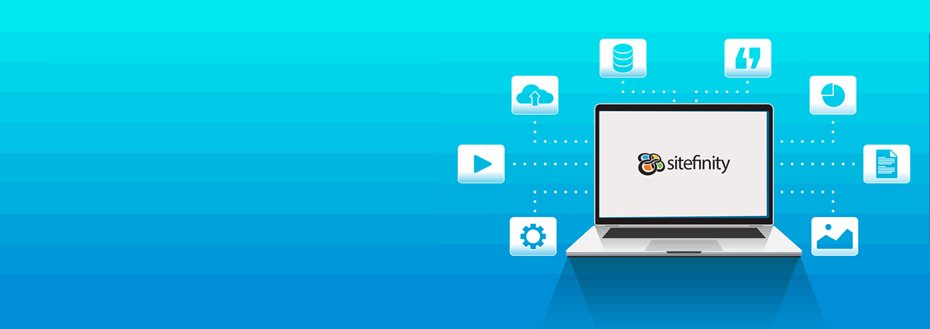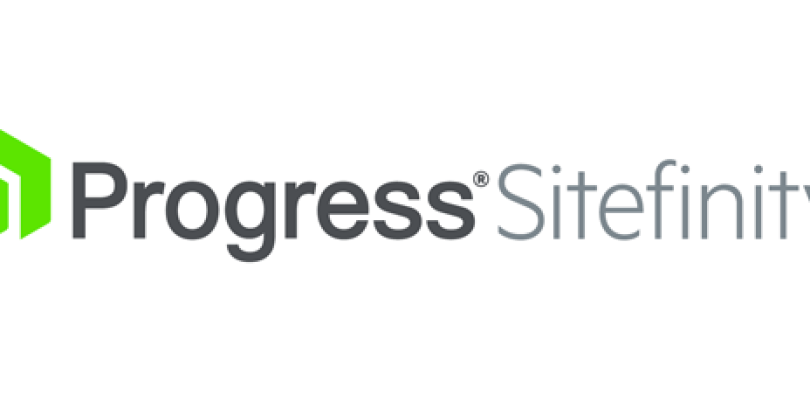Sitefinity CMS can be downloaded as an executable installer or a blank project ZIP file. The executable version of Sitefinity comes with web-based project management and eight design templates.
Due to the permissions required by the Project Manager, the executable version of Sitefinity can be challenging to obtain. It runs on Windows versions (XP, Vista, 7).
The Blank Sitefinity project can be opened in Visual Studio, and development can begin immediately.
The problem is that the Blank Project is missing the layout templates that come with the Sitefinity executable version of the installer. Luckily there is a workaround to this that allows you to design Sitefinity templates to be used with the Blank Project.
Sitefinity Community Edition is now available in the Windows Web App Gallery. It is a free version of Telerik’s popular Sitefinity ASP.NET CMS and is perfect for personal and small websites.
All applications from the Web App Gallery can be installed using the Web Platform Installer. This free tool makes it easy to download and install popular applications available for the Microsoft web platform.
Advantages and Disadvantages of Sitefinity
Usability. For example, Sitefinity is easier to use than Joomla, as site administrators spend less time managing their site. And it takes less time to work with it. Considering the Joomla CMS, considering so many different contributors, it is often not set up most intuitively, and many companies find it challenging to use. It was seamlessly integrated with the Windows Server environment. If you run a Windows server and use many other Windows tools, you’ll probably be interested in Sitefinity.
A “natural extension to ASP.NET” makes coding friendly and (relatively) simple for those familiar with the networking environment. Relatively certain future and roadmap. Although there are enough paying customers and Telerik is doing well, Sitefinity will thrive. On the other hand, with the CMS Joomla. Sitefinity’s documentation is professional. On the other hand, Joomla documentation and talks are all over the place, and you have to know how to use a search engine very well.
Very professional Sitefinity presentation in all areas. All material produced by the marketing team is top quality. Ability to easily import data from other content management systems and data sources. A lot of good people who work for Sitefinity. The Sitefinity CMS was first released in September 2002 as the RadDesigner control. The product was rebranded in 2005 as Sitefinity. Sitefinity was built on functionality and continually expanded based on customer and partner feedback and suggestions. Telerik, the maker of Sitefinity, was awarded Microsoft Central and Eastern Europe Partner of the Year in the ISV category for Sitefinity development.
Free trial version. While Joomla is forever free, you still get a free starter track with Sitefinity. If you don’t like it and don’t find enough value, don’t use it. Extensibility. Regardless of how business requirements change, you can extend, build, and integrate using a flexible API. Use of APIs. Sitefinity gives you the power to meet even the most rigorous custom development requirements. This tutorial demonstrates content retrieval using both the native API and the Fluent API to get started.

Drawbacks of using Sitefinity CMS
There is no technical advantage. There is nothing new in Sitefinity 4.0 that would give it an edge over the current Joomla 1.5 or 1.6 beta CMS. Fewer extensions. Sitefinity has about 78 modules and controls in its marketplace, while Joomla CMS has over 6,000 wings. Fewer Hosting Providers with one-click install. While some hosting providers support Sitefinity CMS, some unlimited hosting providers now allow one-click installations of Joomla CMS, including the major ones.
An excellent example of one such company is siteground.com which also originated in Bulgaria and spent its time reaching the US market. Fewer Templates. Sitefinity lacks in this area. With Joomla CMS, there are some highly professional pre-made template stores and then an almost unlimited number of free and paid Joomla templates. The small community of developers. Fewer designers and developers with Sitefinity than with Joomla CMS. License ace. This comes with proprietary software. It is tied to a company, and you have to pay for license renewals, updates, etc. Sitefinity pricing.
It is fascinating to see Sitefinity change its pricing model. The current Sitefinity Standard Edition costs $899, and now the new price ranges from free to $20,000 per year: http://www.sitefinity.com/purchase/license-comparison. aspx While I have no doubt many companies would spend the money, there is much more value than a free Joomla CMS offers. Extension prices. With Joomla CMS, you’ll have access to many first-class and free extensions. With Sitefinity CMS, get ready to burn more money as you are likely to pay for most of the well-developed and supported Sitefinity extensions.
user experience
With Sitefinity, you can focus on UX thanks to 4 key points: content management, multi-channel management, personalization, and digital commerce.
Managing our content across multiple digital channels is becoming more and more complicated these days, compounded by the difficulty of reaching the desired audience or the suitable device. This need to create or update content quickly and efficiently is solved thanks to the features offered by the platform, such as online editing, content personalization, SEO tools, form configuration with sending these directly to your CRM and automation systems. Marketing.
Each client makes specific requests and has particular needs. Still, it is now possible to satisfy each one’s recommendations with a single interface that sends your content through all channels and devices. The benefits are clear: improved interaction and visibility, minimized workload by controlling everything from one interface, a significant increase in ROI, generation, and content management wherever and whenever you want. In addition, from a development point of view, distribution through native APIs and REST is prioritized; it presents a decoupled architecture thanks to the separation of the Frontend from the Backend, flexibility of the Fronted for a shorter time to market, and higher performance, extensibility, and marketing automation, etc.
With this platform, you will be able to provide personalized and omnichannel experiences to your customers, adapt the message, and segment the audience thanks to receiving rich data and intelligent information with detailed analytical reports on key metrics and objectives, allowing you to achieve business KPIs.
There is also the possibility of going one step further, as Sitefinity allows you to offer catalogs, multiple storefronts, specific promotions, and payment processing so that your customers receive an experience on another level.
main pillars
- The content reaches any device thanks to the APIs and the modern and efficient UX of the platform.
Flexible API. - They facilitate the extensibility of the manager.
Accelerated Mobile Pages (AMP) support. - Content is faster and easier to consume.
Visual Studio support. - Increase developer productivity with Sitefinity VSIX.
ASP.NET MVC support. - It allows for creating clean, modern, and fast websites using this Microsoft support.
Comprehensive security. - Your customers’ privacy and business will no longer be a concern.
